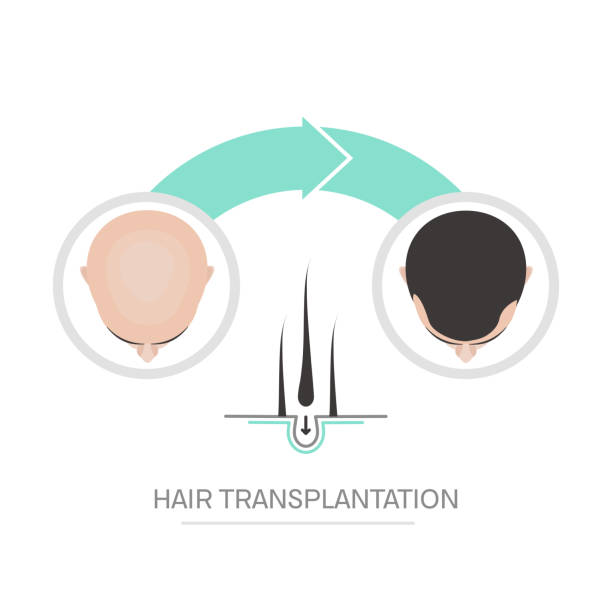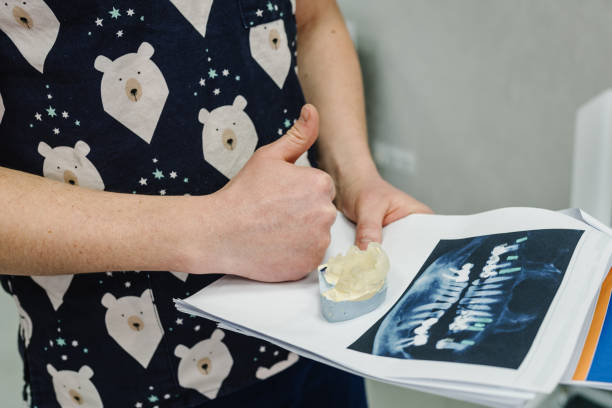Nerve Lateralization Vadodara, India
Nerve lateralization as a procedure for tooth replacement, We use Nerve Lateralization for placing implants at Esthetica Dental Office. Our team has the requisite knowledge of Nerve Lateralization and can keep the patient comfortable throughout the surgery. If you live in Vadodara, Gujarat, or the neighbouring region and want a natural-looking restoration, call us at (91)9408401616 to make an appointment.

What Is Nerve Lateralization?
Nerve lateralization is a surgical procedure used to safely move the inferior alveolar nerve to allow the placement of dental implants in the lower jaw (mandible). Some patients have a high mandibular nerve, leaving insufficient bone height to place implants while maintaining proper prosthetic space.
By lateralizing the nerve, the implant can be placed securely in the jaw bone without compromising nerve function. The procedure provides enough vertical inter-arch distance for a proper prosthetic crown, bridge, or full-mouth restoration.
In modern dentistry, nerve lateralization can also be combined with computer-guided techniques and ultrasound surgical tools to minimize trauma and ensure safety.
Anatomy of the Mandibular Nerve
The inferior alveolar nerve is a branch of the mandibular nerve, which exits the mandible around the lower bicuspid region. It provides sensory supply to the lower lip, chin, and surrounding soft tissues.
During nerve lateralization:
-
The bone covering the nerve is gently removed from the buccal (cheek) side.
-
The nerve is carefully moved laterally or buccally to create space for implant placement.
-
Advanced ultrasound and micro-surgical instruments are used to avoid nerve damage.
This process allows implants to be placed in the posterior mandible without reducing bone stability or causing sensory loss.
Why Dentists Perform Nerve Lateralization
Nerve lateralization is typically indicated when:
-
Patients have a high mandibular nerve limiting bone height for implant placement.
-
Posterior mandibular implants are needed for fixed teeth or full-arch restoration.
-
Traditional bone augmentation or sinus lift procedures are not feasible.
-
Patients want immediate, stable implant solutions with minimal additional surgery.
This procedure ensures that implants can be placed safely and securely, restoring both function and aesthetics for patients with challenging jaw anatomy.
How Nerve Lateralization Works
The procedure involves the following steps:
-
Preoperative Planning: Using CBCT scans and digital imaging, the exact location of the mandibular nerve is identified. The implant positions are carefully planned to ensure safe nerve lateralization.
-
Bone Removal: The bone covering the nerve is gently removed using micro-surgical or ultrasonic instruments, minimizing trauma.
-
Nerve Lateralization: The nerve is carefully moved laterally, creating enough room for implant placement without stretching or compressing the nerve.
-
Implant Placement: Dental implants are inserted into the jaw bone behind or beneath the lateralized nerve.
-
Immediate Prosthetics: In many cases, temporary or permanent prosthetic teeth can be placed shortly after surgery.
This technique allows patients to regain chewing function and natural aesthetics while minimizing the risk of nerve injury.
Benefits of Nerve Lateralization
Nerve lateralization offers multiple advantages for patients with high mandibular nerves:
-
Enables implant placement: Patients with insufficient bone height can receive secure dental implants.
-
Reduces the need for grafting: Avoids complex bone augmentation procedures.
-
Supports immediate loading: Temporary or permanent teeth can be placed quickly.
-
High success rate: When performed by experienced surgeons, the procedure is safe and predictable.
-
Minimal sensory disturbance: Proper technique ensures nerve function is preserved, and long-term complications are rare.
-
Restores aesthetics and function: Patients regain confidence and natural-looking teeth.
Nerve Lateralization for Neurosensory Disorders
Nerve lateralization can also aid patients with nerve-related issues:
-
Some patients experience nerve compression or injury due to trauma, degenerative diseases, or neurological conditions.
-
By mobilizing the nerve and improving blood flow, the procedure can promote nerve healing and function restoration.
-
Increased blood flow supports recovery of sensory nerve tissue, reducing numbness, tingling, or discomfort.
Studies have shown that nerve lateralization can help manage pain, facial tenderness, and other neurosensory impairments, improving overall quality of life.
Safety and Risks
When performed by experienced surgeons, nerve lateralization is a safe and effective procedure. However, like any surgical intervention, some risks exist:
-
Temporary numbness or tingling in the lower lip or chin, usually resolving within weeks or months.
-
Rare cases of nerve injury, which can lead to prolonged sensory changes.
-
Mild swelling or discomfort at the surgical site, which typically resolves within a few days.
At Esthetica Dental, we prioritize patient safety, using ultrasound-assisted tools and careful planning to minimize risks and maximize implant success.
Postoperative Care
Proper care after nerve lateralization is essential for healing and implant integration:
-
Maintain excellent oral hygiene by brushing gently and using a mouthwash.
-
Avoid hard or chewy foods during initial healing.
-
Attend all follow-up appointments to monitor nerve function and implant stability.
-
Report any persistent numbness, tingling, or discomfort immediately.
Following these guidelines ensures a smooth recovery and long-term success for your dental implants.
Comparison with Other Techniques
-
Conventional bone grafting: Often requires multiple surgeries and extended healing.
-
Nerve lateralization: Allows immediate implant placement and reduces overall treatment time.
-
Zygoma or basal implants: May be alternatives in specific cases but are usually indicated for upper jaw bone deficiencies, not mandibular nerve issues.
Nerve lateralization is the preferred option when the inferior alveolar nerve obstructs implant placement in the posterior mandible.
Success Rates
Clinical studies and practical experience show:
-
High success rates for posterior mandibular implants placed with nerve lateralization.
-
Most patients experience temporary sensory changes, which resolve within weeks.
-
Long-term implant survival is excellent when performed by experienced dental surgeons.
At Esthetica Dental, our expertise ensures safe nerve manipulation and predictable results for implant-supported restorations.
Advantages Over Traditional Approaches
-
Reduces the need for grafting in the posterior mandible.
-
Immediate prosthetic restoration possible.
-
Minimal invasiveness with advanced surgical tools.
-
Preserves nerve function while creating space for implants.
-
Predictable outcomes for both aesthetics and function.
This technique has transformed implantology for patients with challenging mandibular anatomy.
Why Choose Esthetica Dental for Nerve Lateralization?
-
Experienced surgeons: Specialists in advanced implantology and nerve procedures.
-
Minimally invasive technology: Ultrasound-assisted and computer-guided surgery.
-
Immediate restoration: Fast recovery and temporary or permanent prosthetics.
-
Comprehensive care: From evaluation and planning to implant placement and follow-up.
-
High success rate: Safe nerve manipulation and reliable implant outcomes.
-
Patient comfort: Local anesthesia, sedation options, and gentle surgical techniques.
At Esthetica Dental and Maxillofacial Surgery Hospital, our team ensures safe, predictable, and natural-looking dental implants, even in complex cases.
Popular Services at Esthetica Dental
-
Dental Implants: Nerve lateralization, basal implants, zygoma implants
-
Maxillofacial Surgery: Jaw corrections, trauma reconstruction
-
Facial Cosmetic Treatments: Smile design, veneers, and aesthetics
-
Oral Surgery: Tooth extractions, impacted teeth removal, cysts
-
General Dentistry: Routine check-ups, preventive care, cleaning
Conclusion
Nerve lateralization is a groundbreaking solution for patients who need posterior mandibular implants but have a high or obstructive mandibular nerve. With careful planning, advanced tools, and experienced surgeons, it allows safe implant placement, minimal invasiveness, and immediate prosthetic restoration.
At Esthetica Dental and Maxillofacial Surgery Hospital, Vadodara, we provide highly effective nerve lateralization treatment that restores function, aesthetics, and confidence. Whether you need a single implant, multiple implants, or full-mouth rehabilitation, our team ensures comfortable, predictable, and natural-looking results.
Call +91 94084 01616 today to book your consultation and start your journey toward a healthy, confident smile.






